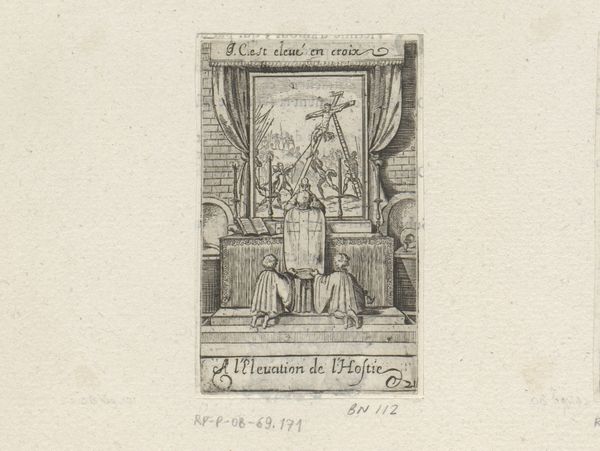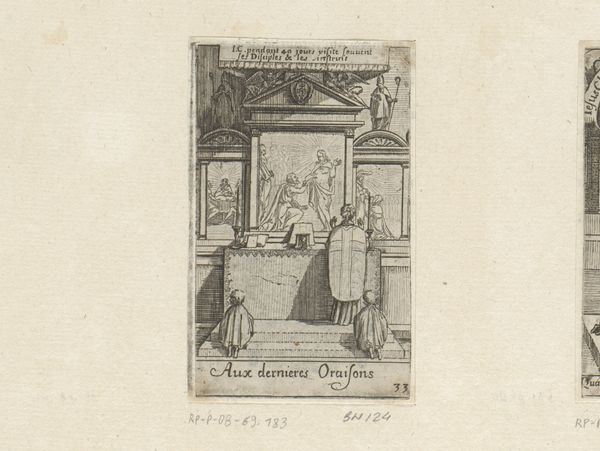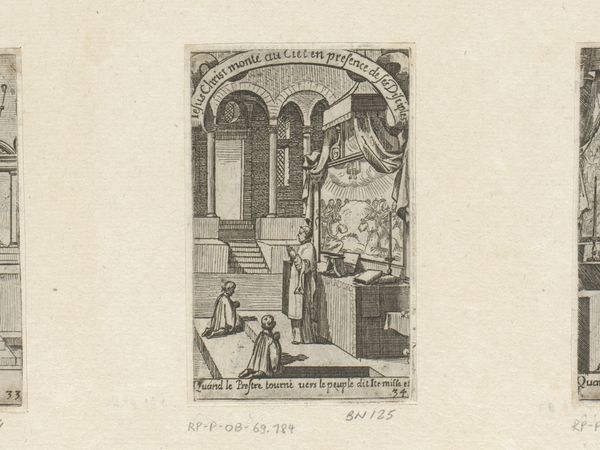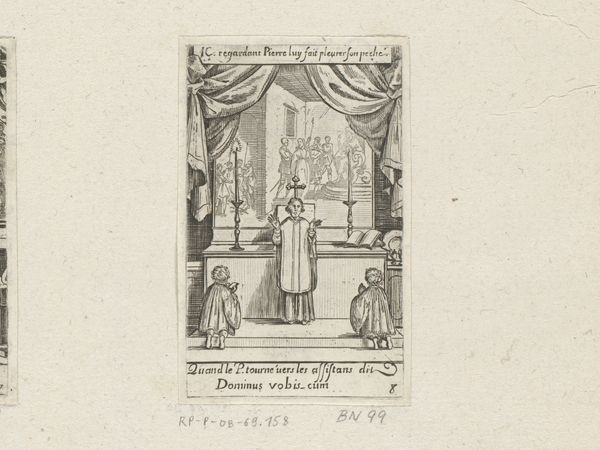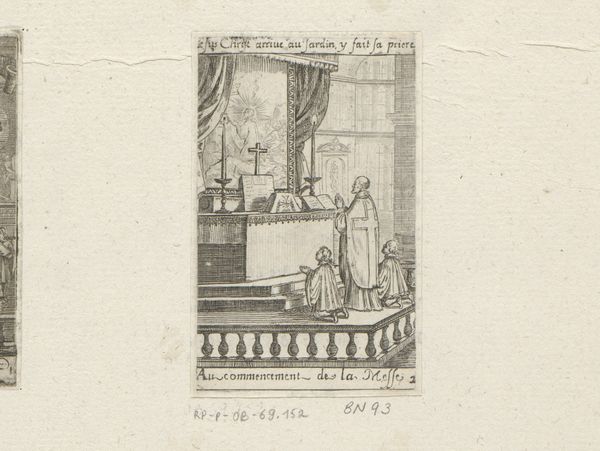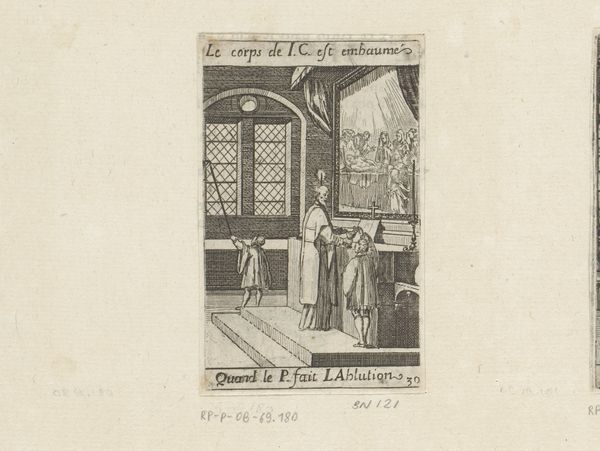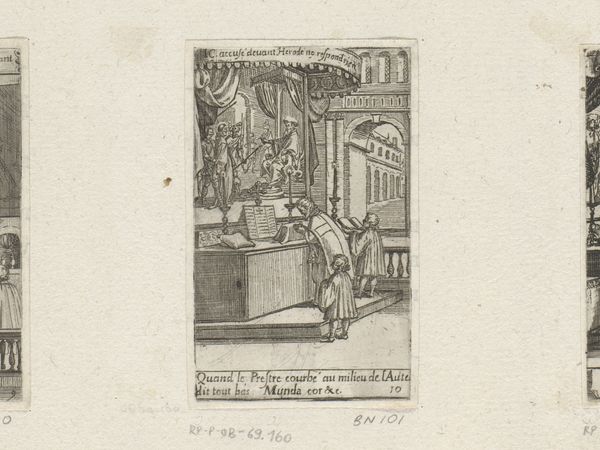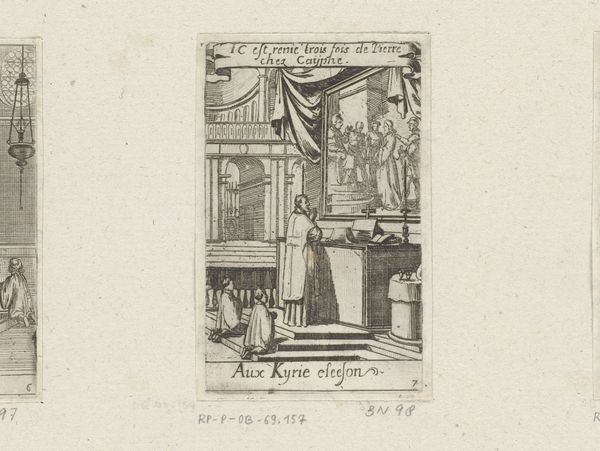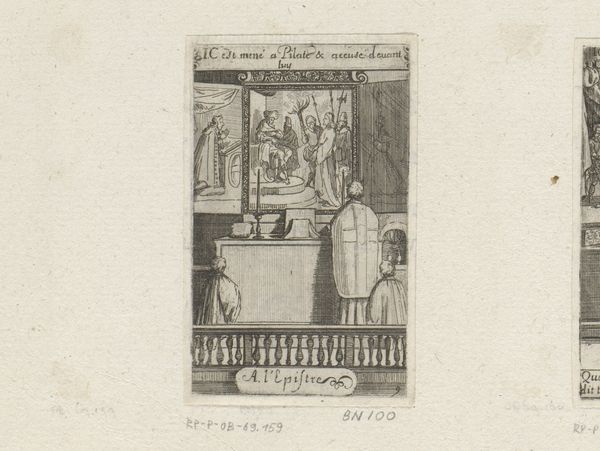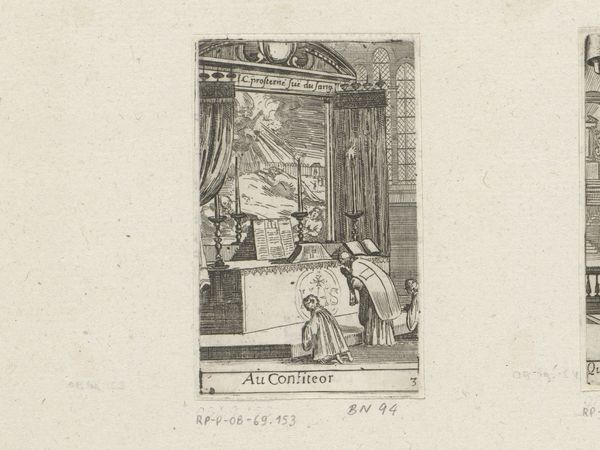
print, etching, engraving
#
narrative-art
#
baroque
# print
#
etching
#
history-painting
#
engraving
Dimensions: height 84 mm, width 52 mm
Copyright: Rijks Museum: Open Domain
Curator: Here we have "Priest with Chalice and Two Altar Boys before an Altar," a 1661 engraving and etching by Sébastien Leclerc I, currently residing in the Rijksmuseum. My initial thought is how the artist created a somber mood using contrasting scales. What strikes you most? Editor: The detail is remarkable for a print of this size. What do you see in this piece from a formalist point of view? Curator: I am immediately drawn to the piece's carefully constructed composition. Observe how the altar, the priest, and the altar boys form a stable triangular shape, lending a sense of groundedness to the scene. But above, Leclerc creates an almost literal ascent, visually leading the viewer up to the figure of Christ on the Cross in the inset above the altar. This tension creates dynamism. Do you agree? Editor: I do. I’m particularly intrigued by how Leclerc used line to create depth, particularly in the folds of the drapery behind the crucifix. It adds such complexity to the print. Curator: Precisely. Leclerc exploits the possibilities afforded by etching and engraving, manipulating line weight and density to differentiate between textures, between foreground and background. It suggests an adept understanding of the possibilities inherent in printmaking as a medium, more broadly. Editor: Looking closer at the work’s details definitely deepens its emotional impact and enhances my appreciation for Leclerc's technical skill. I never considered this before, but you have highlighted some of Leclerc’s compositional techniques. Curator: It is often by considering the internal logic of the work and the artist's decisions with medium and materials that we gain fresh perspectives on the past.
Comments
No comments
Be the first to comment and join the conversation on the ultimate creative platform.

